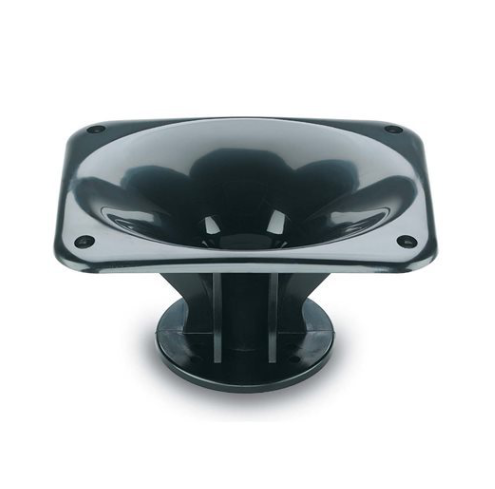

In this blog post I test the Eighteen Sound ND1TP 1" compression driver with the XT120 Horn. I purchased these drivers new from Eighteen Sound for my own evaluation for use in project 1736 found here. My goal is to find a high frequency solution that matches the Purifi PTT8.0X04-NAB-02 that off the shelf commercially.
This is the first time evaluating any products from Eighteen Sound. I was drawn to the brand by it's published data, which is show below for the ND1TP compression driver. We see a very linear response with zero breakup.

The impedance sweep for the ND1TP is shown below. Notice how linear the response is through the passband and absence of mechanical breakup. Naturally I was curious to try.

XT120 Horn
I was also interested in the excellent polar response on the XT120 horn. The manufacturer's published data is shown below. We see excellent off-axis control. My hope that no smoothing was applied to the graph that may embellish the result.

Objective Test Data
I began my testing by mounting the driver in a test enclosure measuring 30cm wide. I placed 1" Styrofoam walls to the sides and top to ensure minimal edge diffraction and replicate my planned cabinet dimensions for the 1736 project.

Impedance Sweep
The impedance sweep shows the FS at 841Hz however we see some peaks at 1kHz and 1.5kHz which usually indicate resonances. Above 2kHz we see at relatively flat sweep except for a small bump at 4.5kHz.There is some breakup occurring at 13.74kHz and 17.43kHz.
Frequency Response
Below is the raw frequency response measured at 1m.
Response Errors:
- Broad Q response irregularity centered around 3.5kHz.
- -6dB shelf starting at 6kHz which is unusual to see. The would be very hard to correct in a passive crossover.
Off-Axis Colored Polar Map
Below is the off-axis response of the XT120 horn with the ND1TP driver. We see pattern control starting at around 2kHz which quickly narrows to only a 40 degree listening window. The coverage then widens again at 5kHz to a nominal 90 degree coverage specified by the manufacturer. Coverage remains wide narrowing to 60 degrees at 15kHz.
Looking at the same results however in a waterfall format is shown below.
Unfortunately, based on the test data so far I would have to rule out the XT120 and ND1TP for use in the 1736 project. I was hoping the XT120 horn would perform comparably to my own products however the results are not even close. For example below is the polar map for my circular horn No.1689.



I then decided to mount the ND1TP compression driver on the 1869 horn to see how much the XT120 was influencing it's response. Below is the ND1TP on horn No.1869 for comparison.
We see the response smoothness improve however we still see the -6dB shelf at 6kHz. Overlaying the XT120 and 1869 horn is shown below for comparison.

Moving onto the time domain performance, we see burst decay shown below for the ND1TP and XT120 combo. I decided to add a notch filter to flatten the response somewhat for these tests.


The flattened response is shown below. I've shown the sample to sample match up overlaid as well.

I tested harmonic using an 85dB test signal. Nothing jumps out at me on this test.
Increasing to 95dB is shown below.
I then looked at intermodulation distortion for an 85dB test signal. I used a 2kHz LR4 HPF for this test to more accurately represent a normal case use.
We see -50dB performance in the upper treble for my 95dB test. Performance is shy of my target by a good 15dB.
Conclusion
I was disappointed in the overall result.
The results are particularly striking in comparison to my results with the Peerless OC25SC65 found here.
I had really hoped that this horn/driver combo was going to work out. I even had the drawings ready to go for the 1736 project, but unfortunately it's back to the drawing board.














